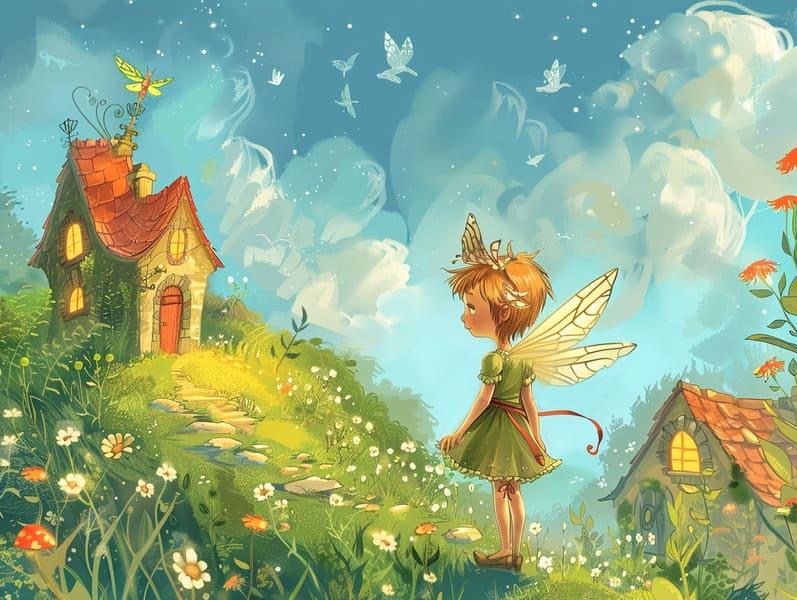Exploring the Roots of Popular Fairy Tales and the Ageless Captivation.
Exploring the Roots of Popular Fairy Tales and the Ageless Captivation.
Blog Article

Legendary fairy tales have legendary status. These stories have been relayed from one generation to the next centuries before they were ever published. They emerged from a variety of societies, including American traditions. They were initially passed along among mature audiences, often carrying themes and messages concerning the societal norms and beliefs of the time.
The Brothers Grimm, the two Grimm brothers, were among the first to gather and publish many of these beloved tales. Their collection, "Grimm's Fairy Tales," included tales like "Ashenputtel," "Hansel and Grethel," and "Little Snow White," which have since become cornerstones in the world of famous fairy tales. Similarly, the Danish author's charming tales, such as "The Little Mermaid," and "The Ugly Duckling," have floated into hearts worldwide, establishing their place in the pantheon of famous fairy tales.
Though they are centuries old, traditional fairy tales remain as significant as ever, especially as children's bedtime stories. These enchanting tales are now available in different formats, including colorful picture books, delightful animations, and online storybooks.
Their ongoing significance can be linked to several delightful features:
Crucial Morals: Classic fairy tales often share important moral lessons. Narratives like "The Boy Who Cried Wolf" teach the significance of sincerity, while "The Race of the Tortoise and the Hare" underline the benefits of persistence and unassuming nature. These tales offer children clear distinctions between moral and immoral, molding their moral compass in a subtle yet deep way.
Empathy and Awareness: Traditional fairy tales frequently depict protagonists facing tests and troubles, prompting kids to understand with their struggles and champion their triumphs. For instance, "Beauty and Her Beast" points out the benefit of appreciating inner worth to recognize the true nature of a character, promoting insight and discernment.
Cultural Perception: Many timeless fairy tales are saturated in the cultural contexts from which they bloomed. Learning from these narratives can provide informative snapshots into different social structures, nurturing a sense of global insight and discernment.
Imagination and Creativity: The fanciful elements in old fairy tales—mythical creatures—inspire children’s innovations. These tales lead readers to enchanted realms, triggering innovative ideas and a sense of magic that endures a lifetime.
Timeless fairy tales are not only charming but also enlightening. They work as charming tools in building various thinking and feeling skills in kids. When timeless fairy tales are spoken out loud, they foster language development by presenting new lexicon and detailed sentence structures. This practice also boosts auditory skills and concentration, as kids pay close attention, anxious to see what happens next.
Furthermore, contemplating the themes and characters of fairy tales can foster reasoning skills and analytical skills. Children are educated to discern patterns, foresee events, and make sense of cause and effect. These examinations also advance young ones convey their thoughts and feelings, nurturing check it out their emotional intelligence.
In today’s electronic age, the abundance of digital storybooks has made these fairy tales more reachable than ever. Internet sites and online apps present huge assortments of ancient fairy tales that can be experienced or listened via anytime, anywhere. Fairy tales read out loud are particularly well-liked, giving an immersive method for kids to immerse in these magical stories. Audiobooks and read-aloud videos move characters and settings to life, often augmented by whimsical soundtracks and tunes that heighten the narrative journey.
The timeless charm of classic fairy tales lies in their ability to evolve to modern times while staying true to their core messages. Contemporary modernizations of these stories often integrate more representative figures and modern settings, making them understandable to today’s audience. However, the central morals of fearlessness, understanding, and justness remain unchanged, continuing to influence young listeners of all ages.
Traditional fairy tales also offer a sense of coziness and recognition. They distribute a structured narrative with a transparent beginning, middle, and end, often ending with the settlement of conflicts and the triumph of morality over wickedness. This predictability can be easing for little ones, bringing a sense of security in an unstable world.
Timeless fairy tales continue to fascinate and teach new generations, maintaining their elegance and pertinence in modern society. As children's night stories, they provide a perfect blend of fantasy and learning, furthering moral values, empathy, and creativity. The proliferation of internet fairy tales and the well-received status of fairy tales recited assure that these traditional narratives remain obtainable to new generations.
By holding onto and spreading these narratives, we continue to admire the rich tapestry of inventiveness and cultural heritage. Whether you are delving into a vibrantly illustrated book, perusing a web collection, or playing an spoken story, the spell of timeless fairy tales is always within reach. These stories point out of the consistent presence of stories and its ability to unify us across epochs and places.
Be it you are accessing a vibrantly illustrated book, delving into a internet library, or listening via an spoken story, the appeal of timeless fairy tales is always within reach.
These narratives convey of the eternal influence of stories and its ability to bind us across epochs and places, making a tie that charms and informs alike.